6 Mirror Moves That Build More Strength Than Weights After 45
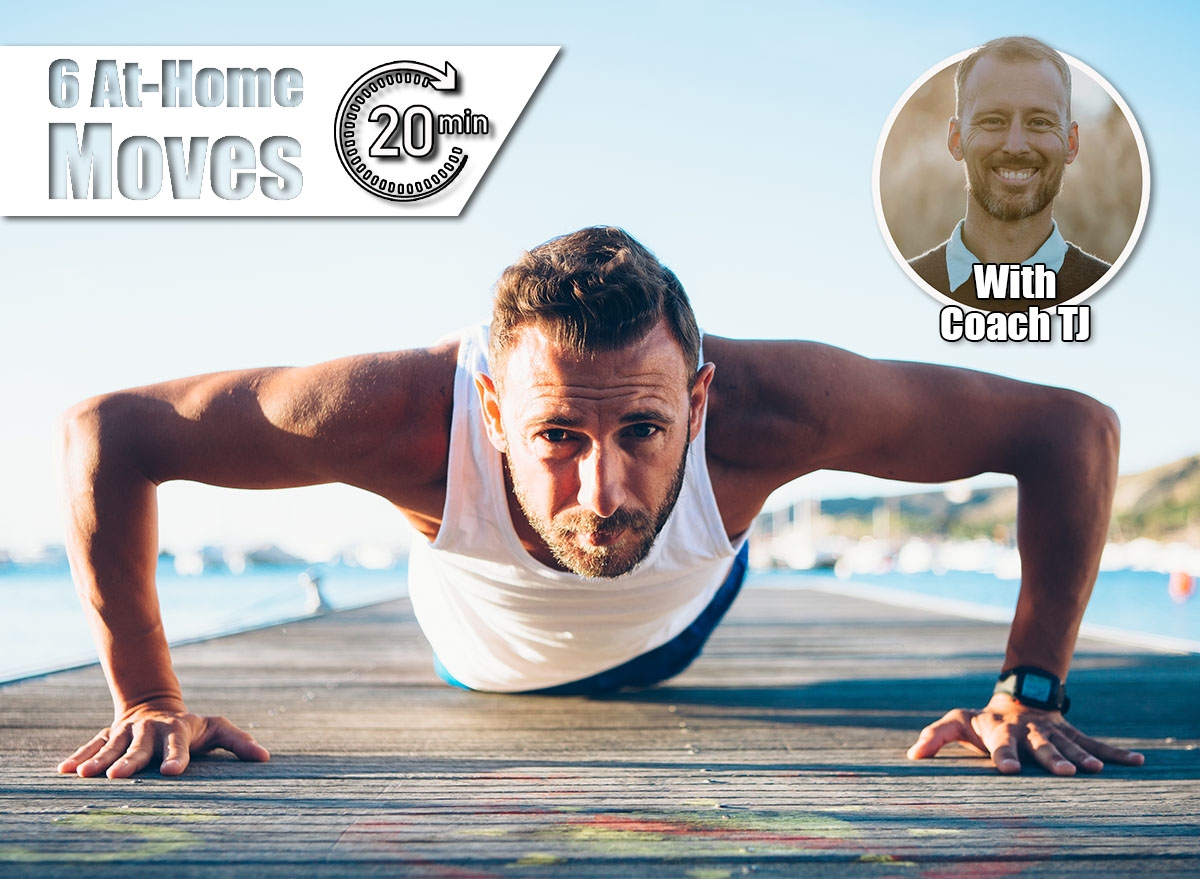
Let’s face it – hitting the gym gets harder as we get older. Between demanding careers, family responsibilities, and bodies that don’t bounce back like they used to, finding time for lengthy weight training sessions becomes a real challenge. But here’s something most people don’t realize: you can actually build more functional strength using just your bodyweight and a mirror than you can with traditional weights, especially after 45.
Ready to discover six powerful moves that will transform your strength without ever stepping foot in a gym? These mirror-based exercises will help you build real-world strength while improving your form and preventing injury.
Why Bodyweight Beats Weights After 45
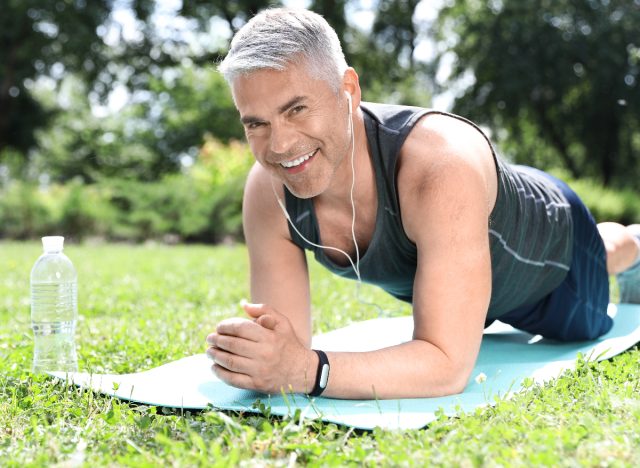
After 45, our ability to recover is much slower and less efficient than it was in our 20s and 30s. This is largely due to hormonal changes and general decrease in our overall metabolic rate. Bodyweight or mirror exercise exercises are so beneficial for those of us beyond our 45th year because we are much less likely to be injured using our body weight and focusing on proper form.
Bodyweight exercises are usually done for high reps which can improve heart health over age 45, these exercises can be done anywhere making them easier to fit into our often career driven lives as we move into our late 40s. They can easily be done in short bursts making it easy to do several sets of any exercise throughout any given day. I utilize the burst method frequently with my clients in their mid late 40s who travel a lot. An example would be, I would have them do as many sets of 10 to 20 push-ups as they can throughout the day. This means they can do some when they first get up in the morning. They can do some more after they shower, they can do them in between meetings and they can get a couple rounds in before bed. This method really helps with exercise compliance, and as you know, consistency is key for results.
Using a mirror whenever possible until proper form is being utilized, once proper form is understood it is better to go without a mirror to enhance proprioception.
The Gravity Line Squat
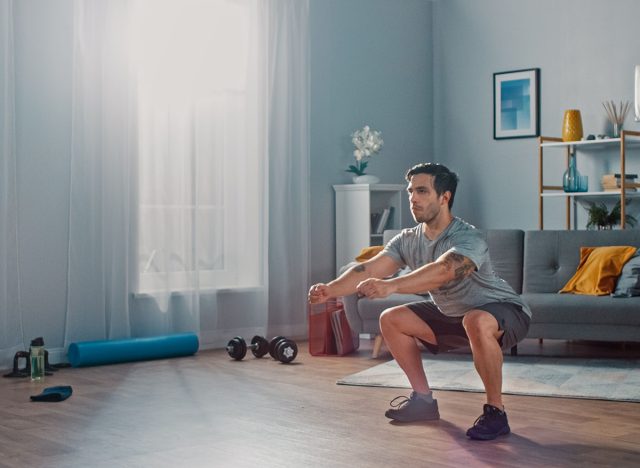
The gravity line squat is my #1 recommended mirror-based strength move.
I teach the bodyweight squat slightly different from what you may have traditionally seen. I’ll take you through it step-by-step. I teach it this way for two primary reasons. One is to ensure proper biomechanics. Two is to help maintain length in the spine as to avoid any spinal compression during the exercise.
- Stand sideways in front of a mirror and gently tuck your chin to lengthen the back of your neck while gently tucking your pelvis to lengthen the bottom of your spine. Gently pull your belly button in towards your spine.
- Bring your arms out in front of you, spread your fingers, bend your wrists back, and spiral your arms open so that your fingers point toward the floor. I like the analogy of Spider-Man shooting a web to imagine how the arms would look.
- While trying to maintain the chin tuck and the pelvic tuck, start to push your knees forward until your hips are forced to bend.
- Continue to squat down as low as you can until you reach parallel. Parallel is when your knee is directly in line with your hip.
- Slowly return to the starting position doing your best to maintain the chin tuck and pelvic tuck and length of your spine.
- Perform 3 to 5 sets of 30 to 100 reps per set.
- Avoid letting your chin lift up and your butt stick out as much as possible. Also avoid trying to sit back too far or go too deep.
The Lateral Squat
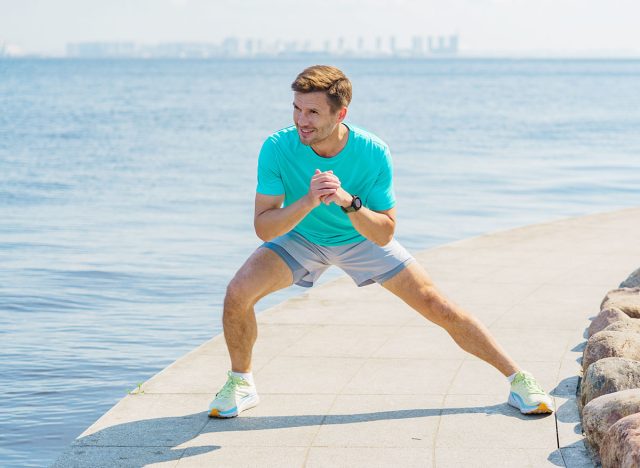
Exercise number two would be the lateral squat, also known as a Cossack lunge. This is a lateral lunge, meaning you’re lunging sideways. This is great for strengthening the inner thigh muscles, the glutes, quads, and is great for improving balance and flexibility, which we tend to lose in our middle aged years.
- Face the mirror and stand with your legs as wide as you can comfortably keeping your feet both pointing forward.
- Slowly start to shift your weight into one leg. Allow the leg that you’re shifting into to start to bend at the knee and ankle. Go down as far as you can, allowing your heel to lift off the ground as you get lower.
- To come back up, keep your chin tucked and slowly push your way back up to the starting point.
- From here you can either repeat the movement on the same leg or you can work back-and-forth from leg to leg for a more dynamic exercise variation.
- Watch in the mirror to make sure that you are not over rotating. As you watch in the mirror, imagine that you are stuck between two panes of glass meaning you can’t lean forward or back nor can you rotate you can only move side to side.
- A common mistake is allowing the hips and torso to rotate. Another common mistake is trying to go too deep too early, which can create problems for the knee.
The Rhomboid Matrix
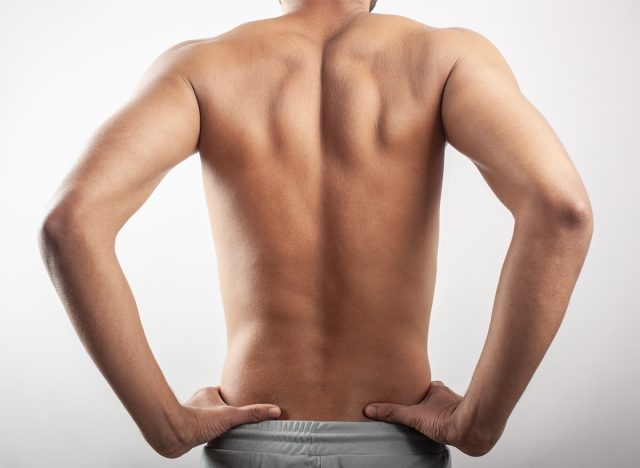
For the third exercise, I chose the rhomboid matrix. The rhomboid matrix is designed to strengthen the muscles along the spine and especially the muscles between the shoulder blades. This exercise not only improves the strength of our back muscles. It can greatly improve our posture and provide all the health benefits of good posture.
- Lie on your stomach. You can either be on your chin or turn your head to either side. If you do turn your head to the side, make sure you alternate which way you turn your head with each set.
- Straighten your arms and bring them to a 45° angle with your shoulder, think about reaching to opposite corners of a room.
- Keeping your elbows straight and your chest on the ground, reach your arms up as high as you can, hold for one to five seconds, and with control lower your arms to the starting position.
- Check in the mirror to ensure that you were getting your arms high enough and not lifting your chest. Also watch for any bending of the elbow.
- Perform 3 to 5 sets of 30 to 100 repetitions per set.
- For variation on the exercise, you could also have your arms straight out at 90° angles or you could have your arms down by your hips. These will work different parts of the interscapular muscles. You can also play around with rotating the thumbs toward the floor or keeping the palms neutral as a different way to stimulate the shoulder muscles.
- Common mistakes include bending the elbows, lifting the chest off the ground, and utilizing too short of range of motion.
Wide Grip Push-Up

Exercise number four would be wide grip push-up. This is like a traditional push-up, with the exception that you take a much wider arm position while turning your arms out so that the fingers point to the walls beside you. Performing the exercise in this manner allows us to stretch our pec muscles while we strengthen them. Tight pec muscles can lead to all sorts of shoulder issues and postural dysfunction.
- Set up in a regular push-up position, either from your toes or on your knees, depending on your strength level. Now one arm at a time slowly walk them out away from your body as far as they go, keeping your fingers pointing to the walls beside you.
- Gently tuck your chin while pushing the back of your head up towards the ceiling trying to keep it in line with your spine and pelvis. Keep a neutral pelvis meaning you’re not tucking your butt or sticking it out somewhere in the middle.
- Gently pull your belly button into your spine and slowly begin to lower your body towards the floor. Think of your wrists giving first then your elbows lastly, your shoulders as you slowly descend, your chest just short of touching the floor.
- Maintain the contraction of your abdominals as you push yourself back up to the starting position, following the same order of pushing into the ground feeling the wrists extend then the elbows, and lastly, the shoulders as you finish back to the starting position.
- Utilize the mirror to make sure that you are keeping a neutral pelvis and that you are not reaching your chin towards the ground. You can also use the mirror to ensure that your arms are equal distance apart and in line.
- Perform 3 to 5 sets of 5 to 50 repetitions.
- Common mistakes include reaching the head forward, locking the elbows forcefully at the top of the movement, and dropping your pelvis towards the floor.
Roll Up/Roll Downs
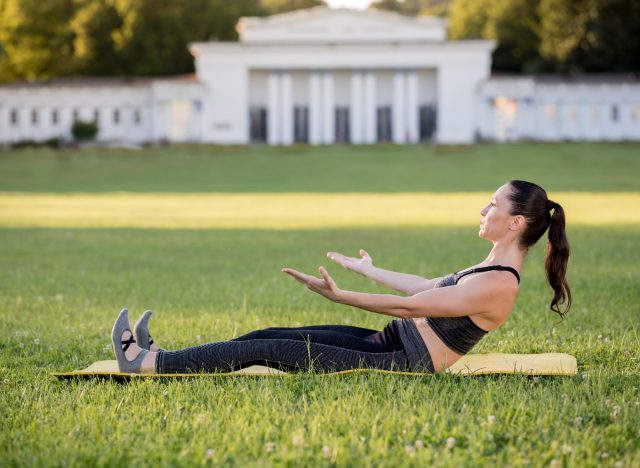
Exercise number five is roll up/roll downs. This abdominal exercise is great for developing the rectus abdominis, a.k.a. the six pack muscle while improving spinal mobility and awareness.
- Begin by sitting with your knees bent and your feet on the floor.
- Grab your shins and create the longest spine that you can by gently tucking your chin and lengthening the back of your neck.
- Then lean back without rounding your spine, about 10 to 15 degrees.
- Release your shins and keep your arms out in front of you. Slowly begin rolling your pelvis and the lowest part of your spine towards the floor. Try to make each vertebrae individually gently push into the floor until you’ve rolled down to about the bottom of your shoulder blades.
- While exhaling, curl your body back up to the starting position. When you’ve reached the starting position slowly extend (arch) the lower spine, then the middle spine until your spine is completely straight and you are in the exact same position from what you started the exercise.
- Watch in the mirror to ensure that you are starting to lean back, but have a completely straight spine. You can also watch to ensure that you are rolling through making sure that each vertebrae gently touches the ground. If you face the mirror, you can watch to make sure that you are not rotating.
- Perform 3 to 5 sets of 30 to 50 reps.
- Common mistakes include straightening the spine too early, not rounding the spine enough, reaching forward with your head, holding your breath. You should exhale anytime the spine is rounded and the abs are contracted and inhale at either the very top or bottom of the movement.
The T8/T9 ELDOA
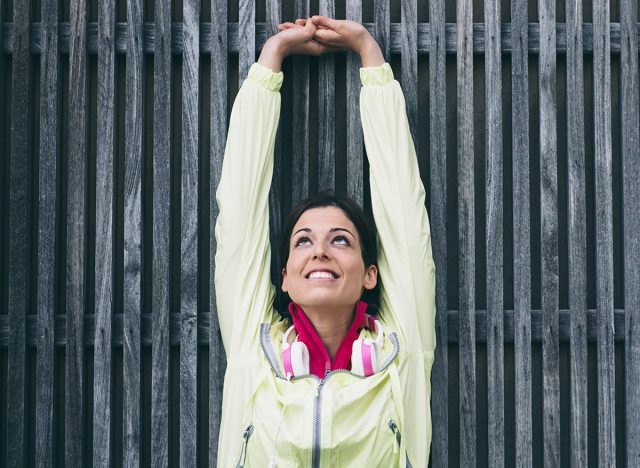
Last but certainly not least is exercise number six, the T8/T9 ELDOA. This is a postural exercise designed to strengthen all of the spinal muscles while creating space between the eighth and ninth thoracic vertebrae.
- Begin by facing the mirror or being sideways to the mirror. Each time you try the exercise try a different perspective in the mirror while sitting, bend your knees and keep your feet on the floor.
- If you can maintain a straight spine, slowly reach both arms out in front of you, straighten your elbows, rotate your arms so your fingers face the floor.
- If you can maintain that position slowly bring both arms up over your head, push your palms to the ceiling, allowing your shoulder blades to come up towards your ears.
- Maintain the posture for one minute, making sure to follow all the following cues. Keep your chin tucked, and your eyes looking one to 2 feet in front of you at the floor, be sure to breathe from your belly keeping your abs relaxed, keep the fingers spread, the wrists bent back, elbows straight, and arms rotated open, keeping the fingertips pointed down (Think of Spider-Man shooting a web for a reference), continue to push your arms and shoulder blades up toward the ceiling.
- Very slowly, unwind the posture, one piece at a time until you return to the starting position. From there, go ahead and relax the rest of your spine.
- Some cues to check in the mirror are: make sure you’re keeping your spine as straight as possible, make sure your arm position is symmetrical, make sure that your ear, shoulder and hip stay in line at all times, make sure to breathe from your belly.
- One set for 60 seconds, the 60 seconds begins when you’re in the full posture not as you’re working your way into it.
- The most common mistakes are holding your breath, letting your spine round, clenching your jaw, and most importantly, coming out of the posture too quickly.
When You’ll See Results
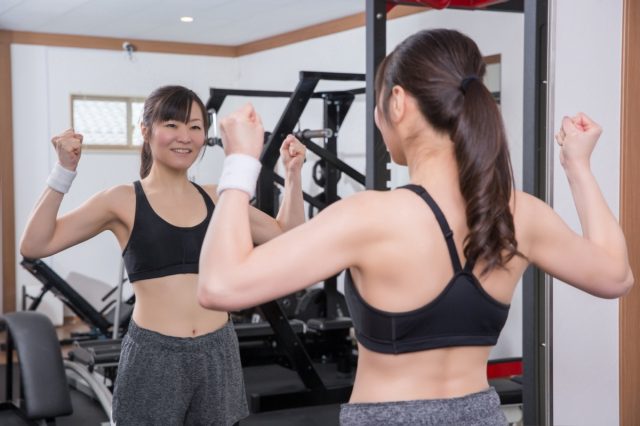
You can expect to see strength gains within the first week or two. This is due to the fact that most initial gains in strength are neurological, meaning your body gets more efficient at the movement hence making you stronger at the movement. You can expect to see muscle changes around the 4 to 6 week mark and you can expect to see tendon and ligamentous changes around 12 weeks.
Daily Habits That Accelerate Results

To accelerate these movements, some habits include: Staying hydrated by drinking a minimum of half of your body weight in ounces of clean water every day, shoot for between .75 and 1.0 g of protein per pound of body weight every day to enhance muscle growth, be consistent with your exercise program a minimum of four days a week will definitely increase the speed at which you see results. Lastly, get between 8 to 10 hours of sleep every night to enhance recovery and growth hormone and testosterone production.
The Key to Success
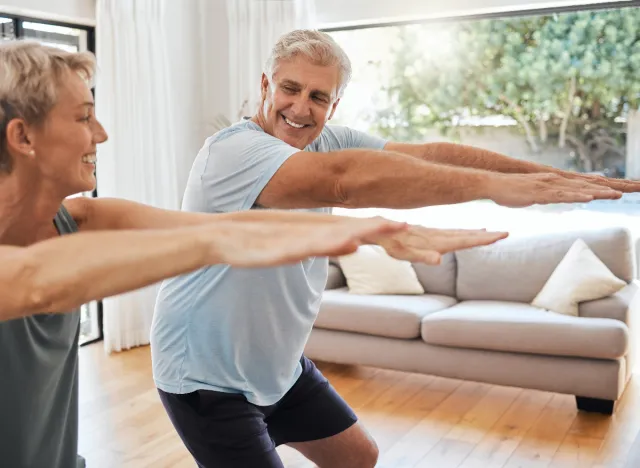
My final piece of advice would be consistency over intensity. Even if you can’t do all the reps or do the form perfectly to start it’s important to stick with the exercises to get results. You don’t have to push yourself into the ground. You just need to show up and put in the work consistently.
Real Results From Real People
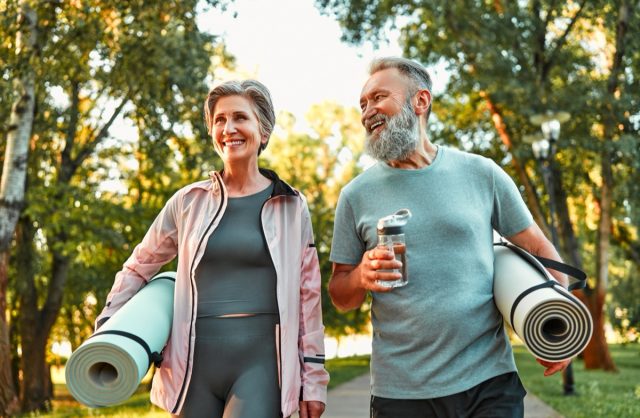
My most recent and one of my favorite success stories was with Mike. Mike was 65 years old and came in overweight and on multiple medications. His primary goal was to get off blood pressure medications. Within just six weeks of doing bodyweight only exercises four times a week not only did he get off his high blood pressure meds, but he also got off his cholesterol meds.